Decision Spread
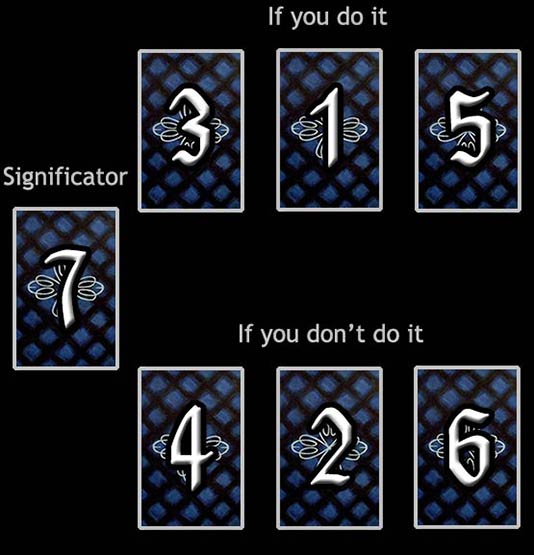
Difficulty: Easy
This simple but highly useful spread calls for a question to be asked in this format:
'What happens if I do (X), and what happens if I do not do (X)?'
Please note that it should not be viewed as a decision between two different options, but about whether a single option should be exercised or not. A second option would call for a separate reading.
Card #7 is the significator, the overall theme of the query.
Cards #3, #1, & #5 represent the chronological sequence of events that occurs if the reader chooses to do (X).
Cards #4, #2, & #6 represent the chronological sequence of events that unfolds if the reader chooses not to do (X).
Your Decision Reading
The Significator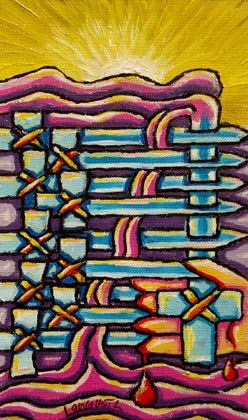 10 of Swords |
Outcome if you do it: | ||
 The Tower |
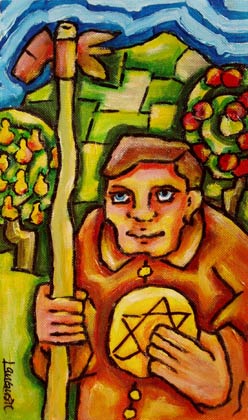 Prince of Coins |
 Prince of Swords |
|
| Outcome if you don't do it: | |||
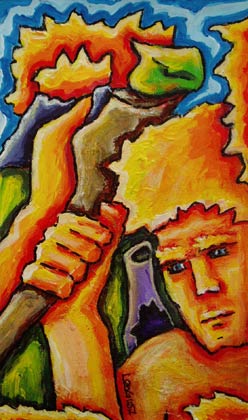 Prince of Wands |
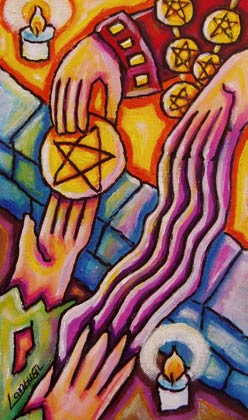 6 of Coins |
 The Devil |
|

10 of Swords
Letting go of rationality is shown here as a dissolving process. Nine swords are cutting up a tenth sword, the point of which is melting and with this fluid wets the other nine swords.
The hand is injured by the four lower swords and is opening up; two drops of blood can be seen. It is not clear how many of the swords are or should be melting. The sun rising in the background brings with it new strength.
Outcome if you do it:

The Tower
A small ray of light shines through a crack in the wall and arouses our yearning for freedom and knowledge. The prison walls burst open and we can escape. We have already taken hold of the sword which stands for differentiation, consciousness and independent thought.
The monarch's insignia of the Emperor shows we are prepared to reconquer the seat on our own throne.

Prince of Coins
The fields and fruit trees are well kept and managed. Everything seems to be in order. The harvest is certain to turn out well. Apart from a few gold buttons, the prince does without any jewellery. His facial expression mirrors his pride in his performance, but at the same time a certain submissiveness.

Prince of Swords
The strong helmet protects the prince, while, with eyes closed and head bent forward, he is demolishing the hard wall. Some bricks are falling down. A part of the wall looks like a bookcase.
This is all about ancient knowledge and opinions, the details of which are being asked about or, in the truest sense of the word, which are being blown into mid-air. However, with his eyes closed the prince cannot take into consideration what he is throwing around.
Outcome if you do not do it:

Prince of Wands
The prince appears unexpectedly in the picture. We are slightly alarmed. He looks as though he were made of fire and he seems to be setting his surroundings on fire.
He is lifting his wand as though to fight and moves everything out of his way. But the purple vase, which he has broken in his haste, might have perhaps been useful to him. He hardly notices it; the contents are now lost. In the background a volcano is erupting and pouring its lava over the picture.

6 of Coins
The rich man is reaching over the wall and giving away the surplus of his material goods. The poor man is giving something back; it is unclear how. There is a candle on the side of the rich man, which was concealed on the Five of Pentacles. An unbroken circle of energy emerges.

The Devil
The colours black and white show the limits of a polarity, a disconnection, which cannot be outdone. The subconscious has no connection with the conscious. The burning fire points to the fact that the devil is linked with pain and torture.
The five-pointed star is upside down. The goat's horns are pointing downwards; classical symbols of the devil. The square oven symbolises the dependence on material things. Two clenched fists are chained together. Each can free the other whereby freeing itself, but only if it is brave enough to take the key from the fire. For this it has to open its hand.
